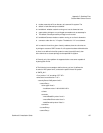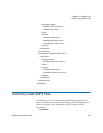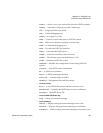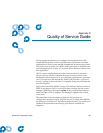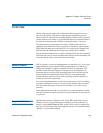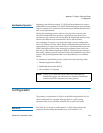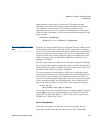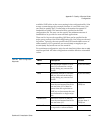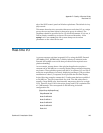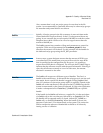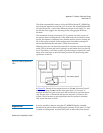
Appendix D Quality of Service Guide
Configuration
StorNext 3.5 Installation Guide 144
Non-Realtime Operation 4
Beginning with StorNext release 3.5, QOS has been enhanced to reserve
bandwidth for non-realtime I/O clients. Differentiating between realtime
and non-realtime I/O clients should result in better bandwidth utilization
and overall performance.
During the mounting process, there is now provision to specify the
amount of bandwidth to be reserved. Applications that do not have
awareness of the external API can leverage the bandwidth amount. Also,
clients with different load characteristics can be differentiated.
Non-realtime I/O support is provided through a central configuration
file on the FSM server side, which defines the bandwidth reservation for
non-realtime I/O requests on certain clients. This bandwidth reservation
(RVIO) has higher priority than normal non-realtime clients, but lower
priority over the realtime application (RTIO). FSM will always attempt to
first satisfy realtime requests, and then follow the bandwidth reservation
request. The remaining bandwidth is even distributed to non-realtime
clients.
To summarize, bandwidth priority is allocated in the following order:
• Realtime applications (RTIO)
• Bandwidth reservation (RVIO)
• Non-realtime I/O requests
Configuration
The primary configuration for QOS is in the FSM configuration file. No
client configuration is required, although there is a QOS tuning
parameter that can be specified when the file system is mounted.
Unit of I/O 4
Real-time I/O is based on well-formed I/O. This means that for the
purposes of determining bandwidth rates, well-formed I/O is
Note: If there is not sufficient bandwidth to accommodate the
bandwidth request, the client receives whatever bandwidth
remains after RTIO requests have been granted.




